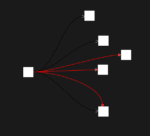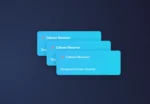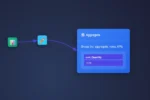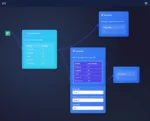
by tyler garrett | Jun 30, 2025 | Data Visual
In today’s competitive landscape, gaining real-time insight into your supply chain operations is no longer merely an advantage—it’s essential. Industry leaders and decision-makers increasingly recognize the critical need for supply chain transparency, not just to monitor production and delivery but to predict disruptions and identify efficiencies. From raw material sourcing to demand forecasting, visualizing each product’s entire journey through analytics and visualization tools provides not only operational visibility but strategic clarity. Leveraging breakthroughs in data analytics, real-time visualization, and innovative software development, your organization can transform disparate data points into actionable intelligence, driving agile decision-making and meaningful outcomes.
The Strategic Importance of Supply Chain Transparency
Transparency in the supply chain is more than a buzzword; it is a necessary strategy for growth-oriented enterprises. Organizations that embrace transparent supply chains unlock deeper understanding into their operations, enabling better tracking from initial procurement to final customer delivery. This clarity reduces bottlenecks, streamlines logistics, and empowers proactive problem-solving to mitigate potential supply disruptions. Transparent supply chains facilitate stakeholder accountability, strengthen consumer trust, and enhance brand reputation, offering competitive differentiation.
Advanced analytics methodologies enable organizations to integrate and analyze varied datasets, turning intricate logistical information into clear, visualized insights. For instance, robust historical sales analysis reveals areas where demand fluctuates most significantly. Such insights enable proactive adjustments in forecasting and inventory management. Furthermore, real-time supply chain data visualization provides an intuitive toolset to accelerate reactions to external disruptions, market volatility, or unforeseen delays. Ultimately, implementing transparency through effective analytics positions your organization strategically by minimizing vulnerability and amplifying responsiveness to market needs.
Unlocking End-to-End Supply Chain Visualization with Data Integration
Transparent supply chains are achieved through seamless data integration. Modern businesses rely on numerous data streams, sourced from departments across procurement, manufacturing, inventory tracking, sales, and transportation logistics. Integrating these streams can seem daunting, especially when the data originates from varied platforms, formats, and operational silos. This complexity demands robust Extract-Transform-Load (ETL) processes to unify and cleanse data sets before visualization and analysis. Expertise in advanced ETL consulting services enables organizations to quickly configure automated data management workflows that power transparency initiatives.
Leveraging custom analytics processes, including specialized user-defined function (UDF) development, further solidifies the seamless integration necessary for accurate and timely data visualizations. Beyond merely combining siloed datasets, these specialized processes offer granular level analytics, revealing intricate insights into functions like supplier reliability, transportation efficiency, and inventory optimization. Companies investing in a data-integrated approach rapidly improve their responsiveness, enabling proactive maneuvering to avoid costly operational disruptions, inventory mismanagement, and logistics inefficiencies.
Predictive Insights—Harnessing AI and Machine Learning in Supply Chain Visibility
Traditional visibility in supply chain management focused primarily on historical analysis and current statuses. While valuable, today’s competitive landscape demands predictive capabilities that harness machine learning and AI-driven analytics to anticipate supply chain behaviors. Enterprises embracing predictive analytics and visualizations gain a strategic advantage by forecasting accurate demand expectations, anticipating potential logistics disruptions, and optimizing inventory levels dynamically.
Building robust, production-ready machine learning pipeline designs ensures advanced predictive analytics become part of your supply chain transparency toolkit. Predictive analytics integrates seamlessly with various upstream and downstream systems, such as ERP, CRM, and warehouse management solutions. Coupled with advanced Machine Learning algorithms, these integrations enable sophisticated, real-time visibility and informed decision-making. Detailed visualization of model diagnostics through visual regression model evaluations grants data scientists and decision-makers immediate transparency into the accuracy and performance of predictive models, improving trust and operational agility.
Real-time Visibility: Immediate Actions—Immediate Outcomes
Real-time data analysis provides the backbone of true transparency in supply chains. Unlike retrospective analytics, real-time data visualization empowers manufacturers, distributors, retailers, and logistics operators to act responsively as supply chain conditions evolve. Tools like streaming data platforms combined with real-time analytics dashboards allow organizations to respond instantly, distributing resources and adjusting production schedules without delay. Real-time visibility techniques, including source-aligned and processing-time windowing methods, provide instantaneous insights that improve responsiveness from supplier hubs to consumer delivery stages.
Organizations embracing real-time transparency tools reap rapid efficiency benefits, maintaining superior product and service availability in the face of volatile market conditions. By proactively adjusting transportation routes, managing warehouse inventory, or dynamically reallocating supply chain resources based on live data visualization, businesses gain increased flexibility to manage real-world unpredictability. This agility increases customer satisfaction, promotes loyalty, and reduces lost revenue opportunities caused by supply disruptions or delays.
The Efficiency Factor: Reducing Costs through Visualization-Driven Decisions
Beyond improving responsiveness and customer service, visualizing the end-to-end supply chain contributes substantially to cost efficiency. Visual data analytics clarifies the complex relationships between operational elements, effectively minimizing unnecessary storage investments through Just-in-Time data transformation protocols. By discerning where inventory imbalances and storage inefficiencies occur, analytics-driven visualization empowers direct recalibration of inventory levels with precision.
Integrating actionable visual insights, firms can systematically reduce carrying costs, avoid expensive emergency transportation, and proactively identify suppliers who offer superior reliability or pricing. Furthermore, visualization-driven transparency reveals patterns and overlaps that promote enhanced operational efficiency across transportation logistics management and warehouse operations. Reductions in overhead related to excess inventory control and logistics resource misuse directly impact profit margins, positioning organizations to remain resilient and adaptive in their marketplace.
Agile and Scalable Infrastructure: Embracing Cloud Solutions for Comprehensive Visibility
Transparent supply chains require agile technical infrastructure capable of scaling to meet diverse and dynamic business needs. Cloud-based data solutions offer unparalleled scalability, elasticity, and accessibility, essential for achieving end-to-end transparency smoothly. Emerging cloud integration technologies facilitate advanced analytics capabilities such as automated APIs—for example, securely sending ERP data to analytical storage solutions like the capability to send SAGE API data directly to Google BigQuery. This integration enables rapid and accurate visualization and reporting capabilities, creating an accessible framework from which transparency naturally emerges.
Migrating supply-chain analysis to scalable, agile cloud infrastructures not only supports sophisticated data analytics but allows rapid deployment of visualization dashboards across departments, suppliers, and customers. These intuitive visual tools empower everyone—from procurement managers to executives—to access, interpret, and leverage supply chain intelligence in real time. Businesses investing in scalable cloud visualization solutions rapidly outperform competitors by consistently maintaining granular supply chain visibility, preparing effectively for market disruptions, and confidently guiding strategic growth initiatives.
Conclusion: Transform your Supply Chain into a Strategic Advantage
The path to end-to-end supply chain transparency doesn’t need to be complicated. By strategically leveraging advanced data integration, predictive machine learning, real-time analytics, and cloud agility, organizations can rapidly visualize their entire production journey from supplier to consumer. In doing so, businesses achieve measurable operational efficiencies, proactive disruption prevention, and enhanced customer satisfaction. With the right expert guidance, transforming your supply chain into a transparent, efficient, predictive, and resilient strategic asset becomes an attainable reality—driving consistent growth, improving competitive positioning, and ultimately creating lasting business value.
Ready to advance your data strategy and supply chain transparency further? Reach out to our data analytics and ETL experts at Dev3lop.com so we can accelerate your journey together.
Thank you for your support, follow DEV3LOPCOM, LLC on LinkedIn and YouTube.

by tyler garrett | Jun 30, 2025 | Data Visual
In today’s rapidly evolving business landscape, reactive approaches to equipment maintenance are becoming obsolete. Forward-thinking enterprises increasingly leverage analytics-driven predictive maintenance dashboards to gain early insights and proactively mitigate risks. With intelligently designed dashboards tracking real-time metrics, predicting wear and tear, and enabling proactive interventions, businesses avoid costly downtime and ensure operational excellence. Effective predictive maintenance is not merely a convenient bonus—it’s a critical competitive differentiator, translating directly into enhanced productivity, reduced operational expenditure, and increased reliability. Ready to harness technology-driven innovation for your maintenance needs? Let’s explore how predictive maintenance dashboards are becoming the cornerstone of modern equipment management strategies.
Understanding Predictive Maintenance and Its Importance
Before diving deep into the technological aspects, let’s clarify what predictive maintenance truly is. Unlike reactive maintenance, where interventions occur post-failure, or preventive maintenance, which follows fixed intervals regardless of actual equipment health, predictive maintenance leverages real-time and historical data analytics to foresee equipment failure accurately. By harnessing advanced machine learning algorithms and data-driven insights, predictive maintenance proactively identifies anomalies, minimizing unplanned downtime and enhancing efficiency.
The importance of predictive maintenance dashboards is unparalleled in high-stakes industries such as manufacturing, logistics, energy production, and healthcare. Imagine a manufacturing facility where a critical component fails unexpectedly, causing prolonged downtime, delayed deliveries, and potentially significant financial losses. Now visualize a dashboard capable of monitoring equipment health ubiquitously, alerting personnel days or even weeks before potential failures, allowing ample time for corrective action. Reliably predicting issues reduces emergency repairs and associated overtime costs, extends asset life, and helps organizations shift from reactive damage control into strategic forward planning. Businesses across sectors value these technological solutions to proactively improve bottom-line efficiency and safety. For even deeper context, explore strategic data insights in our article on use cases for data-driven businesses.
How Predictive Maintenance Dashboards Harness the Power of Data
A well-functioning predictive dashboard collects enormous amounts of data from various equipment sensors and operational monitoring systems embedded throughout a facility. This robust gathering of structured and unstructured data includes sensor readings such as temperature, vibration frequencies, pressure conditions, runtime hours, energy consumption, and historical maintenance logs. Such comprehensive data acquisition can benefit immensely from professional Advanced ETL Consulting Services, ensuring efficient predictive modeling and data readiness.
Once collected, intelligent algorithms process data streams in real-time or near-real-time conditions. With the continual evolutionary improvements in data analytics and IoT (Internet of Things), businesses can now perform powerful analyses combining structured and unstructured data efficiently. In practice, machine learning techniques like supervised learning or neural networks examine past historical patterns and current sensor feedback to identify actionable trends. For instance, vibration deviations exceeding normal operational range thresholds may indicate mechanical deterioration. By validating anomalies with previous maintenance instances, the dashboards effectively anticipate specific failures, supporting timely preventative interventions.
To enhance the effectiveness and clarity of dashboard visualizations, businesses often employ sophisticated visual techniques like self-explaining visualizations with embedded context, allowing everyone—from seasoned engineers to non-technical business stakeholders—to interpret the predictive dashboard effortlessly.
Key Components of Effective Predictive Maintenance Dashboards
Designing predictive maintenance dashboards isn’t just about data availability—they require careful strategizing around specific components for maximum impact. Key dashboard elements include real-time metrics on equipment health, specific fault detection modules, predictive algorithms, and alert systems designed around business operational workflows. Furthermore, efficient dashboard designs embrace clarity, ease of operation, and intuitive interfaces to make rapid interpretation seamless across organizational teams.
Additionally, predictive dashboards greatly benefit from thoughtful integration with established data engineering best practices. Having a thoroughly prepared and clean data pipeline is foundational. Companies increasingly leverage effective data documentation strategies and robust data enrichment pipeline architecture patterns, ensuring the dashboards’ underlying systems remain coherent, maintainable, and transparent.
An optimal dashboard should also provide predictive modeling insight clearly and communicate anomaly metrics effectively through visualization techniques. Integrating feature-rich visualizations, such as custom event visualizations (explore our guide on event droplines for temporal sequence visualization) and comparative analyses through advanced visual representations like network visualization layout algorithms, allows maintenance teams to spot and address critical performance bottlenecks immediately.
Infrastructure and Data Strategy for Effective Dashboard Deployment
The effectiveness of a predictive dashboard largely depends on supporting infrastructure. Reliable data integration, scalable cloud or on-premise systems, and flexible analytic tools underpin dashboard performance. Leveraging Infrastructure as Code (IaC) methodologies ensures scalability, consistency, and faster iteration cycles. IaC enables businesses to define and manage their analytics infrastructure declaratively, enhancing data pipeline reliability and agility critical for predictive maintenance initiatives.
Additionally, choosing a resilient and scalable architecture allows for streamlined data integration from diverse IoT sensor networks into the predictive dashboard effortlessly. Leveraging file systems like Hadoop or analytical engines like Apache Spark, combined with data warehousing solutions, can seamlessly integrate data from varied sensors and sources into unified dashboards capable of insightful predictive analytics. Strategies detailed in our beginner’s guide to data modeling for analytics prove particularly valuable in preparing your data systems effectively.
Optimizing metadata collection is also a pivotal aspect of data strategy. Implementing tools such as Colibri Tableau dashboards for improved server metadata collection supports advanced auditing capabilities and better system governance, important for maintaining analytics infrastructure health amidst a rapidly growing data environment.
Real-world Applications: Predictive Maintenance Dashboards in Action
Predictive maintenance dashboards continue driving significant impact across industries with considerable success. For example, the energy sector uses predictive analytics dashboards for power generation equipment, detecting performance degradation and preempting costly failures in turbines and transformers. Similarly, transportation and logistics companies effectively use predictive models to monitor vehicle performance, ensuring seamless logistical operations by preventing unscheduled break-downs or maintenance lapses.
In manufacturing sectors, critical equipment like conveyor belts, motors, compressors, and pumps regularly benefit from real-time monitoring dashboards. A predictive approach guides businesses toward preventive interventions, identifying and addressing potential failures early and ensuring uninterrupted factory floor productivity. The healthcare and medical sectors increasingly employ predictive maintenance dashboards to maintain hospital equipment reliability, ensuring patient safety by preventing unexpected downtime in critical care environments.
Interested in learning more about the transformative potential of predictive dashboards powered by IoT innovations? Our detailed overview “Unlocking the Power of IoT: How Connected Devices Are Driving Business Innovation” provides invaluable insights into data-driven enterprise innovations.
The Competitive Advantage of Predictive Maintenance Dashboards
Companies embracing data analytics and predictive dashboards noticeably differentiate themselves by operating with increased reliability, significantly reduced operational costs, and greater equipment longevity. Predictive dashboards allow for smarter resource allocation, fewer interruptions, improved equipment efficiencies, optimized inventory and spare parts management, and enhanced customer satisfaction.
By reducing downtime, your organization establishes a reputation for reliability—crucially beneficial in highly competitive market landscapes. Predictive maintenance dashboards foster innovation, empower operational agility, and form the foundational stepping stones towards digitally transformative practices, setting you far ahead of conventional, reactive business competitors.
Conclusion: Embracing Dashboard Innovation for Preventive Excellence
As we’ve seen clearly throughout this journey, predictive maintenance dashboards deliver undeniable strategic value. Their successful deployment depends upon robust data integration, intelligent analytics, and thoughtful visualizations integrated into your business operations. The competitive edge provided by predictive analytics dashboards translates directly into quantifiable efficiency, profitability, and improved reliability. Your strategic investment in predictive dashboards becomes even stronger when supported by professional analytics implementation expertise. Isn’t it time your organization leveraged these powerful data-driven tools for optimal reliability and improved bottom-line performance?
Tags: predictive maintenance dashboards, data analytics, IoT innovations, equipment reliability, infrastructure strategy, advanced visualization
Thank you for your support, follow DEV3LOPCOM, LLC on LinkedIn and YouTube.

by tyler garrett | Jun 28, 2025 | Data Visual
In an age dominated by real-time feedback and instant interactions, understanding your customer’s sentiment becomes pivotal to shaping strategy, enhancing customer experience, and staying ahead of competitors. However, the complexity of today’s digital ecosystem can overwhelm even the most seasoned marketing executives. Imagine having the power to swiftly glance at a visual representation of emotional feedback, instantly grasping customer feelings across social media channels. Customer sentiment heat maps offer precisely this advantage, empowering decision-makers to visualize, interpret, and leverage customer sentiment effectively. As a leading data analytics and innovation consultancy, we specialize in converting abundant yet chaotic social media data into impactful, strategic insights. So, let’s dive deeper into how sentiment heat maps transform abstract data into actionable intelligence.
What Are Customer Sentiment Heat Maps?
In their simplest form, customer sentiment heat maps are visual data representations designed to highlight the emotional tone embedded within countless social media interactions. Using advanced analytics and natural language processing (NLP) techniques, sentiment heat maps evaluate text-based emotions, classifying interactions as positive, neutral, or negative, and then visually representing these findings across time periods, geographic regions, or even demographic segments. Rather than sifting through rows of data or reading lengthy reports, these visualizations provide executives with immediate insights, highlighting trends and sentiment fluctuations in real-time.
Such innovative visualizations extend far beyond simple likes, shares, or mentions; they’re strategically designed tools that empower decision-makers to interpret emotional feedback accurately. These heat maps not only simplify complex datasets but are highly adaptable and scalable—making them ideal for handling streaming data at scale. We discuss more about scalable analytics technologies and patterns in our comprehensive blog, “Handling Streaming Data at Scale.”
The importance of sentiment heat maps extends into various roles within an organization, aiding in everything from product strategy to reputation management. As analytics strategists who have consistently helped clients utilize data-driven tools effectively, we’ve witnessed firsthand the transformative benefits heat maps bring in turning overwhelming unstructured data into coherent visual stories.
Unlocking Strategic Value with Sentiment Visualization
Transforming sentiment data into actionable insights is undoubtedly a competitive advantage. Yet, success goes beyond merely collecting data—it’s about understanding it in ways that drive strategic decisions. Customer sentiment heat maps deliver clarity and convenience, offering visually intuitive, easy-to-digest analytics that allow executives and marketing leaders to grasp how customers genuinely feel about their brands or products.
When analyzed over time, heat maps can uncover hidden trends in consumer opinions, allowing companies to proactively adjust strategies, minimize risks, and optimize their campaigns. Want to know if the launch of your product resonates positively or negatively on a regional basis? A heat map can show sentiment clusters immediately, just hours or even minutes after launch, enabling agile adjustments to your outreach strategy. The predictive ability hidden within sentiment visualization can facilitate more robust decision-making around future business strategies and marketing initiatives.
At Dev3lop, leveraging sentiment visualization is part of our approach to delivering advanced analytics consulting services, helping clients not only identify trends but act decisively on those insights. Sentiment heat maps illuminate a previously unknown narrative about customers, helping leadership minimize guesswork and fueling smarter decision-making.
The Techniques Behind the Sentiment Heat Map
Behind the visually appealing interface of a sentiment heat map, you’ll find sophisticated data analytics techniques working together seamlessly. At their core, sentiment heat maps operate on robust natural language processing (NLP) models capable of parsing and interpreting massive amounts of unstructured text data sourced from platforms such as Twitter, Facebook, Instagram, and beyond. These NLP-powered analytics aim to extract underlying sentiment—positive, neutral, or negative—through semantic analysis, emotional tone recognition, and even intent analysis.
Further enhancing sentiment analytics, vector embedding pipeline designs play a crucial role in understanding the semantic relationships among millions of customer interactions. These robust pipeline architectures enable real-time semantic search and accurate sentiment extraction across various demographics and geographic areas. At Dev3lop, our expertise allows us to create tailored solutions for complex analytical scenarios, like our comprehensive breakdown of vector embedding pipeline designs used for semantic search applications.
Moreover, advanced analytical workflows for sentiment heat maps often integrate metadata-driven access controls to protect privacy and ensure secure data access, an important consideration in today’s landscape of growing data privacy concerns. For a deep dive into best practices for metadata-based frameworks, explore our insights on metadata-driven access control implementation.
Geographic and Demographic Sentiment Analysis in Action
The value of customer sentiment heat maps becomes most evident when applied to granular geographic or demographic data. Geographic sentiment visualization provides a holistic view of consumer emotions mapped over geographical regions, enabling companies to gain powerful strategic insights. For example, retail companies can gauge regional reaction to localized marketing campaigns, while global brands can quickly understand customer sentiment on a city-by-city basis—giving them the agility to fine-tune messaging and optimize ROI for targeted campaigns.
For demographic analysis, understanding different groups’ perspectives can greatly influence your products, services, campaigns, and overall customer experience improvement. Sentiment segmentation by age, gender, income level, and other factors allows even further targeted strategic action. For businesses situated within dynamic economic regions, such as businesses leveraging Austin’s rapidly expanding tech ecosystem, sentiment analysis at this granular level helps companies stay competitive. Explore how innovation in emerging technology hubs is rapidly changing the data analytics game in our article, “How Austin’s Tech Industry is Driving Growth in the Field of Data Analytics.”
Demographic visualization also enables brands to customize messaging based on customer needs and emotional responsiveness, providing more tailored customer experiences and improving retention rates, brand loyalty, and overall customer satisfaction.
Turning Sentiment Data into Executive-Level Decision Making
Effective decision-making requires both comprehensive data and easily accessible insights, especially in executive leadership circles where time is a vital commodity. Customer sentiment heat maps are instrumental in transforming complex social data into clear visual narratives, supporting quicker and smarter executive action.
With strategic implementation of sentiment visualization within executive dashboards, your leadership can rapidly consume meaningful analytics and develop proactive strategies in line with your organizational goals. Find out how we conceptualize insightful dashboards in our article “Creating Executive Dashboards That Drive Real Decisions.”
Moreover, sentiment analytics ensure executives receive near-instant feedback regarding brand strategies, advertising campaigns, and product launches—facilitating corrective actions even when unexpected challenges arise. Advanced sentiment analyses paired with meticulous strategy execution and data recovery readiness practices offer unmatched resilience. Consider exploring our insights on managing real-world analytics pipeline issues in “Partial Processing Recovery: Resuming Failed Pipeline Steps.“
The Future of Sentiment Visualization
The strategic significance of leveraging customer sentiment is becoming unmistakably evident in modern business operations. As artificial intelligence, natural language processing, NLP-driven insights, and analytics methodologies evolve, sentiment heat maps will only become smarter, faster, and increasingly intuitive.
Future advancements in detecting and managing orphaned sentiment data—sentiment information left disconnected or unused within existing analytics workflows—will further refine these sentiment visualization techniques, as discussed in our forward-thinking strategy “Orphaned Data Detection and Management Framework.”
Additionally, emerging visualization technologies using 3D mapping, immersive analytics, and interactive storytelling techniques will provide even richer context and interpretation possibilities, empowering businesses to more effectively navigate and respond to their customer experiences. For further reading about conveying compelling data narratives, explore our insights in “The Art of Storytelling Through Data Visualization.”
The evolution of customer sentiment heat maps indicates significant promise for how businesses stay competitive and resilient in ever-changing business climates. By embracing visualization innovation, organizations assure continued alignment with customer expectations and proactively guide future success.
Thank you for your support, follow DEV3LOPCOM, LLC on LinkedIn and YouTube.

by tyler garrett | Jun 28, 2025 | Data Visual
Successful organizations no longer guess when it comes to managing financial risk; they visualize, simulate, and strategize. The ever-changing financial landscape demands precision, insight, and advanced analytics tools. Among these, Monte Carlo Simulation dashboards have emerged as revolutionary tools providing decision-makers with intuitive visualizations of complex financial risks. By harnessing the power of randomized simulation to predict numerous possible outcomes, organizations can anticipate risks before they’re realized and respond proactively. From measuring investment volatility to pricing complex derivatives, Monte Carlo methods provide a sophisticated lens for forecasting. In this article, we explore the transformative influence of Monte Carlo Simulation dashboards in financial risk visualization, unpack the technology driving them, and demonstrate how organizations can employ these cutting-edge tools to elevate financial decision-making to new heights.
Why Monte Carlo Simulation Dashboards Are Essential for Modern Finance
In the complex and interconnected world of finance, risk management is more critical—and arguably more challenging—than ever. Traditional methods, relying heavily on static data and linear models, fall short in accurately capturing the unpredictable nature of markets. Enter Monte Carlo Simulation dashboards—dynamic tools designed to illustrate a range of possible scenarios, enabling robust analysis of financial uncertainty through probability distributions. By simulating thousands or even millions of randomized outcomes, these dashboards empower analysts to visualize volatility, quantify risk exposure, and perform comprehensive sensitivity analysis that static traditional approaches simply cannot match.
Monte Carlo dashboards provide the ability to proactively explore market variances, predicting outcomes across a myriad of variables and conditions. Such an advanced visualization doesn’t merely highlight existing risk factors but actively identifies unknown unknowns, granting decision-makers previously unseen glimpses into market behavior. For example, asset management firms can quickly estimate potential investment returns against varying market conditions, empowering proactive rather than reactive decision-making. Through intuitive visual insights into simulated data, executives and analysts alike can objectively identify areas of potential vulnerability, efficiently allocate resources, and develop effective risk mitigation strategies to safeguard their enterprises from financial uncertainties and market volatility.
Creating Impactful Monte Carlo Simulations: Key Components and Best Practices
Building effective Monte Carlo dashboards is both a science and an art. It hinges on accurately defining key simulation parameters, selecting relevant probability distributions, and identifying correlated financial variables. Crucially, dashboards need clear visual representation capabilities, insightful metrics, and intuitive navigation to make complex simulation results accessible and actionable to diverse stakeholders.
At the core, selecting appropriate probability distributions forms the fundamental step. For robust analyses, practitioners need to understand the intrinsic behaviors and distribution characteristics of financial metrics like asset returns or stock volatilities. Incorporating data-centric techniques such as advanced data skew detection and handling in distributed processing ensures reliability and precision in simulating realistic financial scenarios aligned to real-world market conditions.
With clear, meaningful visualizations, complex simulated outcomes become understandable. Leveraging advanced visualization practices—including effective multidimensional representation such as Quaternion-based visualization—helps unravel multiple correlated variables simultaneously, providing greater depth and clarity. Employing these best practices translates intricate theoretical models into digestible dashboards that stakeholders across levels can interpret, trust, and act upon confidently.
Leveraging Probabilistic Data Structures for Enhanced Real-Time Analytics
As organizations increasingly require near-instantaneous insights to stay ahead, Monte Carlo dashboards must leverage cutting-edge technology to manage vast computational requirements. Probabilistic data structures, commonly used for efficient approximation in large-scale real-time analytics (as discussed in our guide to probabilistic data structures for stream processing approximation), deliver speed benefits without sacrificing accuracy significantly.
Using data structures such as HyperLogLogs, Bloom Filters, or Count-Min Sketches, simulation platforms can process significant datasets swiftly, facilitating timely generation of Monte Carlo insights. This enhanced processing capacity enriches the real-time visualization dashboards, allowing decision-makers the confidence of continuous near-real-time risk monitoring. As a result, organizations can swiftly implement corrective action or seize opportunities before competitors become aware.
High-performance Monte Carlo dashboards seamlessly integrate with scalable infrastructures, such as cloud platforms leveraging robust services like those provided in an AWS consulting services framework. Real-time monetization of financial insights becomes attainable, driving considerable competitive advantage in highly volatile markets.
Addressing Data Complexity: Advanced Techniques for Flattening Nested Financial Data
Financial organizations frequently contend with structured and unstructured data complexities, from straightforward tabular historical prices to nested JSON responses from financial APIs and market-feeds. Dashboards designed to visualize Monte Carlo simulations must efficiently handle and preprocess highly nested and complexly formatted datasets to generate accurate, insightful displays. Employing advanced techniques such as those described in our article taming nested JSON with advanced flattening vastly simplifies the extraction and preparation process, significantly reducing computational overhead while enhancing quality.
Efficiently transformed, flattened data streamlines Monte Carlo simulations allowing faster and more consistent simulations. Additionally, when combined with a standardized data approach, such as our recommended enterprise-wide data type standardization framework, organizations further optimize data integration within dashboards, ensuring financial simulations function on a trusted and uniform data foundation.
Properly harnessing structured data techniques means dashboards not only perform simulations more effectively but also deliver more understandable, transparent insights. This clarity breeds confidence from end users: executives, regulators, investment teams, and compliance officers count on trustworthy data-driven tools to visualize and confidently navigate risk.
Fostering Collaboration Through Accessible, Secure Simulation Dashboards
The value of a well-crafted Monte Carlo simulation dashboard magnifies when shared across teams and departments. Collaborative and accessible dashboards, residing within secure yet flexible environments (like a purpose-built data sharing sandbox environment architecture), yield maximum organizational impact. These secure environments promote cross-functional teamwork, allowing different stakeholders—analysts, executives, traders, and business units—to test ideas, anticipate risk collaboratively, and quickly adapt strategies according to dynamic market conditions.
By possessing entry points optimized for diverse audiences, modern dashboards democratize sophisticated financial analytics. Transparent models and visualizations not only breed broader acceptance but enhance organizational risk-awareness and financial literacy, empowering stakeholders organization-wide to proactively assess risk implications of diverse factors swiftly and clearly.
With tailored user experiences, layered permission structures, and intuitive visual interactions, collaborative Monte Carlo dashboards facilitate agile decision-making workflows. Teams that once worked in silos now freely share insights, validate hypotheses faster, and ultimately outcompete rivals who employ less connected data and analytics strategies.
Implementing Your Monte Carlo Simulation Dashboard: Steps Towards Success
Deploying Monte Carlo dashboards requires detailed planning and expert execution. First, clearly define risk modeling objectives aligned to your organizational strategic goals. Determine appropriate variables, constraints, probability distributions, and correlations. Involve experienced analysts, data engineers, and visualization specialists early in the planning process for optimal outcomes.
Next, select the right infrastructure. Cloud services, such as AWS, provide scalability to process intensive computation tasks rapidly. Engage seasoned AWS consulting experts to properly architect your dashboard infrastructure, considering factors such as data integration, scalability, accessibility, and performance optimization.
Finally, ensure thorough training and continuous feedback loops. Advanced visualization tools, such as Tableau (covered in our quick guide to install Tableau Desktop), offer user-friendly ways to introduce Monte Carlo simulation concepts to broad audiences, driving internal adoption. Gather feedback consistently, update simulations regularly, and improve dashboard design iteratively. This continuous improvement ensures dashboards remain relevant, effective, and valuable strategic tools.
Monte Carlo simulation dashboards, executed correctly, transform abstract financial uncertainties into actionable business intelligence, equipping decision-makers with confidence to navigate volatile markets strategically and proactively.
Tags: Financial Risk Management, Monte Carlo Simulation, Data Visualization, Advanced Analytics, Dashboard Development, Probabilistic Modeling
Thank you for your support, follow DEV3LOPCOM, LLC on LinkedIn and YouTube.

by tyler garrett | Jun 28, 2025 | Data Visual
In today’s data-driven healthcare environment, harnessing intelligence from vast pools of sensitive patient information is pivotal. Yet, these rich insights come with significant privacy responsibilities. Balancing valuable visualization with stringent anonymity standards isn’t just the right thing to do—it’s critical to maintaining patient trust, compliance, and competitive advantage in a rapidly evolving digital landscape. Utilizing anonymized visualization methods strategically empowers healthcare providers, policymakers, and organizations to innovate confidently and ethically. Let’s dive deep into the techniques that empower decision-makers to unlock full analytical value while safeguarding privacy.
Why Healthcare Data Requires Robust Privacy Standards
Healthcare data encompasses highly sensitive personal information, and breaches or mishandling can lead to severe consequences, both reputationally and financially. Health information, protected by HIPAA (Health Insurance Portability and Accountability Act), necessitates meticulous handling to protect patient confidentiality. A single mistake or a minor oversight in handling sensitive data can compromise thousands of patient records and result in hefty fines, lost customer trust, and legal repercussions. The imperative, therefore, is clear—data-driven healthcare organizations must adopt robust privacy standards to ensure compliance and security against growing cybersecurity threats.
Moreover, privacy of healthcare data extends beyond regulatory compliance. It’s essential to empower meaningful decision-making. Misrepresentation or inadequate privacy measures negatively influence analytics, leading to inaccurate insights and flawed strategic decisions. As showcased in our blog Why Data-Driven Doesn’t Always Mean Smart Decisions, merely being data-driven isn’t enough. Healthcare organizations must strategically implement anonymization into visualization practices. By aligning data visualization techniques with strict data privacy standards, leaders can build trust among patients, enhance organizational credibility, and foster a more transparent analytics culture.
The Role of Anonymized Visualization Techniques
Anonymization serves as the cornerstone of healthcare data privacy. It systematically removes or modifies identifiable features within datasets, preventing individuals from being traced or identified through visual insights. Visualization inherently reveals patterns, trends, and relationships hidden within raw numbers, yet doing so without compromising privacy remains a nuanced challenge. Implemented correctly, anonymized visualization techniques enable healthcare organizations to explore impactful patterns safely and leverage critical insights for strategic decision-making, without risking personal data exposure.
Advanced anonymization extends far beyond merely names or identification numbers—it involves careful alterations across datasets, employing sophisticated masking and aggregation methodologies. Techniques such as differential privacy, k-anonymization, and data perturbation become the go-to tools within data visualization. Each approach provides a robust layer of protection that supports data-driven decisions without sacrificing patient privacy. Assigning these techniques is intricate: it requires considerable analytical skills and technological expertise. Many organizations benefit from consulting firms like ours, specializing in data visualization and providing advanced ETL consulting services and privacy-focused analytics strategy.
Best Practices for Successfully Anonymizing Healthcare Data Visualizations
Anonymizing healthcare data visualizations involves a thoughtful, disciplined process guided by proven best practices. Firstly, assess data sensitivity thoroughly—identify potentially identifiable parameters, prioritize and quantify the associated risks. This plays a fundamental role in establishing anonymization strategies. Next, employ data aggregation effectively. Aggregating data points not only ensures an additional layer of privacy protection but facilitates more straightforward interpretations while safeguarding against reverse engineering scenarios.
In addition to aggregation, consider differential privacy, a powerful method that incorporates random noise strategically, particularly valuable for population-level analytics and forecasting models. For example, techniques employed during a market trend analysis for demand forecasting are easily transferable to anonymized visualization applications in healthcare analytics. Finally, anonymized visual dashboards require regular re-evaluation audits, ensuring continued adherence to privacy protocols amidst ever-changing threats and analytics demands. Investing systematically in training and an organizational culture of privacy-awareness strengthens internal data governance standards, empowering analysts while maintaining patient trust.
Technological Tools That Empower Anonymized Visualization
Today’s advanced visualization tools and technologies make anonymization processes increasingly viable and effective. Visualization platforms like Tableau, recognized widely across businesses (see,the Tableau definition), offer built-in features to securely anonymize data on dashboards and analytical reports. Tools that provide capabilities like masking values, restricting identifiable attributes, or introducing random noise for differential privacy streamlines visualization workflow, inherently embedding privacy as part of their analytical affordances.
Modern Extract-Transform-Load (ETL) platforms also strategically embed anonymizing methodologies during data preparation stages before data even reaches visualization platforms. Partnering with skilled consultants adept at advanced ETL consulting services ensures robust privacy-oriented visual analytics solutions tailored specifically to healthcare standards. Leveraging advanced data preparation and visualization tools creates a robust privacy flow, enhancing performance and providing confidence to healthcare decision-makers who rely on the data for strategic implementation.
Balancing Transparency, Data-Driven Storytelling, and Data Privacy
Effective data storytelling in healthcare isn’t merely aesthetic—it captures narratives that inform actions, improve patient treatments, and shape healthcare policy positively. While storytelling inherently values transparency and deep-dive insights, achieving clarity without crossing privacy boundaries demands strategic tact. Anonymized visualizations are essential storytelling companions, offering transparency and visibility around critical matters while protecting individual patients’ confidentiality.
With anonymization-based storytelling approaches, healthcare organizations can illustrate clearer narratives without exposure risks. Strong data-driven visual narratives communicate stakeholder value better than traditional reporting—much like the techniques detailed in our blog on creating data-driven case studies that convert. Properly anonymized data visualizations build trust and motivate data-driven collaboration between healthcare entities, regulatory bodies, researchers, and patients, elevating the value of storytelling beyond raw datasets that might disclose unnecessary details.
Looking Ahead: Healthcare Data Privacy Innovations
Tomorrow’s healthcare innovators should expect even more rigorous privacy demands as patient data volumes surge, driven by wearable wellness technologies, telemedicine, and online patient portals. Quantum computing and AI-powered analytics approaches promise significant analytical leaps but also elevate challenges around data privacy. Healthcare organizations proactively embracing strategic anonymized visualization techniques can seamlessly transition into future analytical environments empowered rather than constrained by privacy regulations.
In essence, frictionless innovation relies heavily upon proactive privacy methodologies. For instance, sectors adjacent to healthcare—such as Austin’s music industry leveraging data analytics to engage fans—demonstrate creative adoption of privacy-aware strategic analytics. Healthcare leaders should adopt similar forward-looking approaches towards data innovation, continuously refining visualization techniques, technological partnerships, and organizational cultural attitudes on data privacy. Aligning patient privacy intricately with core ethical strategies fosters compliance-ready innovation, shaping healthcare administration settings of tomorrow.
Ensuring Compliance Beyond Technology: Users and Policies
An effective anonymized visualization strategy for healthcare data must transcend mere technological implementation. Organizations need clear communication and stringent policy lectures, focusing on user accountability around data privacy and rights compliance. A strong privacy policy that emphasizes transparent user experience clarifies anonymization practices and data usage guidelines across communications, building trust internally and externally.
Comprehensive training for analysts and stakeholders ensures understanding around anonymized visualization appropriation to avoid accidental breaches through neglected guidelines. It is equally crucial that policies remain adaptive as visualization technology evolves, balancing technological innovation with regulatory compliance seamlessly. With robust privacy policies, clarity, transparent communication, continual education, and technology innovation, healthcare visualization can ethically thrive within data-driven cultures.
To conclude, healthcare organizations utilizing anonymized visualization techniques effectively turn privacy obligations into a strategic advantage, fostering trust, compliance, and future-ready analytical capability.
Thank you for your support, follow DEV3LOPCOM, LLC on LinkedIn and YouTube.

by tyler garrett | Jun 28, 2025 | Data Visual
Quantum computing is no longer just a futuristic buzzword; it’s a profound technological leap reshaping how organizations solve complex problems. At the heart of quantum computing is the concept of “superposition” — an ability of quantum bits, or qubits, to be in multiple states simultaneously, vastly expanding computational possibilities. But how do we visualize something as abstract as quantum superposition? Decision-makers and technology strategists need concrete, meaningful visualizations to harness quantum’s power. Effective visual representation is not only paramount to understanding critical nuances but also essential to applying quantum capabilities strategically. In this blog, we demystify quantum computing visualization, enabling businesses to confidently navigate and embrace the immense potential quantum innovation holds for data analytics, operational strategy, and cutting-edge solutions. As leaders deeply embedded in data-driven innovations like our advanced analytics consulting services in Texas, we know visualizing quantum superpositions clearly can deliver profound insight, helping harness next-generation technology effectively.
Understanding Quantum Superposition: A Strategic Overview
Before diving into visualization methodologies, let’s ground our discussion in what quantum superposition fundamentally means. In classical computing — the computing powering our current digital age — the fundamental unit is the binary bit, represented distinctly as either a 1 or a 0. Quantum computing, however, introduces the qubit, a quantum unit capable of existing in a state of both 0 and 1 simultaneously — dramatically expanding computational possibilities through quantum superposition.
Simply put, quantum superposition is akin to flipping a coin into the air. While airborne, the coin is neither “heads” nor “tails,” yet simultaneously both. Only upon landing and observation does it resolve into one outcome. In quantum mechanics, this uncertain state embodies the rich, probabilistic possibilities inherent to quantum systems. For decision-makers, clarifying this concept is crucial, as quantum states dramatically affect outcomes in data-heavy domains such as fintech applications, cybersecurity, healthcare simulations, and advanced analytics projects where probabilistic modeling dramatically enhances decision-making capabilities.
Implementing visualization strategies for quantum superpositions requires connecting quantum theory’s abstractness with practical, actionable insight. This visual communication transforms complex quantum theory into intuitive analytics tools, empowering strategic problem-solving. Leveraging dynamic visualizations, like those prominent in the analytics strategies discussed in our article on predicting client churn with open-source tools, can be pivotal for extracting true capability and business value from quantum solutions.
A Visual Quest: Representing Quantum States Clearly and Accurately
Visualization of quantum states has traditionally relied upon mathematical notations and theoretical representations, a significant barrier for stakeholders outside specialized physics and mathematics. For quantum technology to integrate meaningfully into business strategy, intuitive visualization methodologies are necessary, going beyond equations to simple and relatable graphical representations.
The Bloch sphere, for example, is perhaps the most widely recognized method for visualizing a single qubit superposition. Represented as points on a three-dimensional sphere, quantum states become chartable, intuitive, and intuitive for stakeholders accustomed to data visualization solutions in conventional analytics portfolios. Such visual paradigms closely resemble visualization methods such as ternary plots discussed in our exploration of ternary plots for three-variable compositional data, enabling organizations to identify patterns, probabilities, and key strategic insights visually.
Moving beyond single-qubit representations, complexities significantly increase. Visualizations now must represent multi-dimensional state spaces where qubits interact and entangle. Innovations in higher-dimensional and interactive data visualization are instrumental in providing clarity for visualization, ensuring stakeholders grasp intricate quantum interdependencies without requiring deeper theoretical quantum physics expertise. With careful, strategic visualization, the quantum potential can become operationally graspable and actionable.
From Abstractions to Actionable Insights: Visualization Techniques for Quantum Computing
Effective visualization moves beyond representation and toward actionable decision-making insights. Quantum visualization solutions should facilitate intuitive and insightful interpretation of quantum outcomes and implications by clearly presenting multi-dimensional or abstract concepts visually. Leveraging methods such as heatmaps and unit visualizations—effectively demonstrated in our overview of unit visualization showing individual data points at scale—can greatly facilitate understanding probabilities and state distributions in quantum problems.
Beyond static representations, interactive visualizations introduce robust ways to navigate quantum computing outcomes dynamically. Interactive visualizations and dashboards—which our team has demonstrated value in through enhanced Tableau Server metadata collection—allow stakeholders to manipulate parameters, simulate outcomes, and generate actionable scenarios based on quantum algorithms and states. Real-time, dynamic visualizations foster deeper intuition around quantum computations, promote exploratory learning, and enhance strategic discussions within the organization.
These visual tools create bridges between quantum computing specialists and strategic leaders. They seamlessly integrate quantum insights with existing business intelligence and analytics platforms, supporting informed decision-making processes and enabling quick and informed responses to data-driven insights and market trends.
Ensuring Quantum Security and Privacy: Visualization Tools for Risk Management
Quantum computing, while powerful, also introduces significant implications for data security, privacy, and compliance. Organizations eager to leverage quantum technologies must simultaneously visualize quantum risk and privacy management clearly and strategically. Quantum vulnerabilities demand advanced approaches, mirroring strategies outlined in our deep-dive on the importance of data privacy in fintech.
Data and cybersecurity visualizations, capable of clearly indicating potential quantum computing-enhanced threats, should guide enterprise risk management practices responsibly. Visualizing quantum risk factors, coupled with secure attribute management solutions like attribute-based access control for fine-grained data permissions, empowers organizations to strategically map out quantum readiness alongside existing digital strategies. Such targeted visualizations help decision-makers proactively address and prepare for quantum-enhanced cybersecurity risks and compliance pitfalls.
A Quantum Leap Forward: Preparing Your Organization Strategically
The visual representation of quantum computing’s superposition states isn’t just about theoretical understanding: it’s a crucial bridge connecting quantum science capabilities with strategic business value. Organizations must strategically integrate quantum visualization within their data-insights processes, building quantum readiness and proactively preparing to harness a quantum-powered analytics future.
Besides visualizations, effective quantum integration demands powerful supporting toolsets and techniques, including top-tier data transformation and analytics platforms. Employing transformative tools such as strategic SQL data advancements outlined in adding new rows of data to SQL databases, or integrating streamlined API consulting engagements seen through our focused exploration of driving value in quick API consulting engagements positions firms to swiftly adapt quantum capability into their analytics landscapes. Coupling quantum visualization solutions with broader strategic analytics innovation sets your trajectory for industry leadership status, paving your organization’s path for sustainable innovation growth.
Conclusion: Empowering Decision-Makers Through Quantum Visualization
Quantum visualization transcends abstract complexity and builds bridges to strategic business insights, especially as quantum computing transitions from the realm of futuristic experiments into real-world business analytics innovations. By coupling intuitive representations of quantum superposition with groundbreaking analytics innovations, organizations cultivate stronger preparedness, enhanced strategic decision-making capabilities, and leading-edge competitive advantage.
Ready to unlock your quantum potential or strategically integrate next-gen analytics within your organization? Explore more sophisticated data techniques with our comprehensive guide on breaking into the data industry, or optimize analytics with sophisticated data transformation methods including code generation for high-performance data transformations. The clarity, expertise, and strategic insight you obtain through effective visualization ultimately empowers your business to harness quantum computing’s immense analytical powers today, and transform decision-making for a quantum-ready tomorrow.
Thank you for your support, follow DEV3LOPCOM, LLC on LinkedIn and YouTube.






























